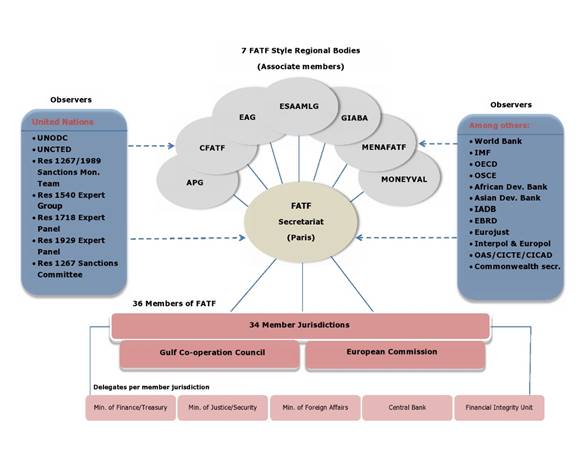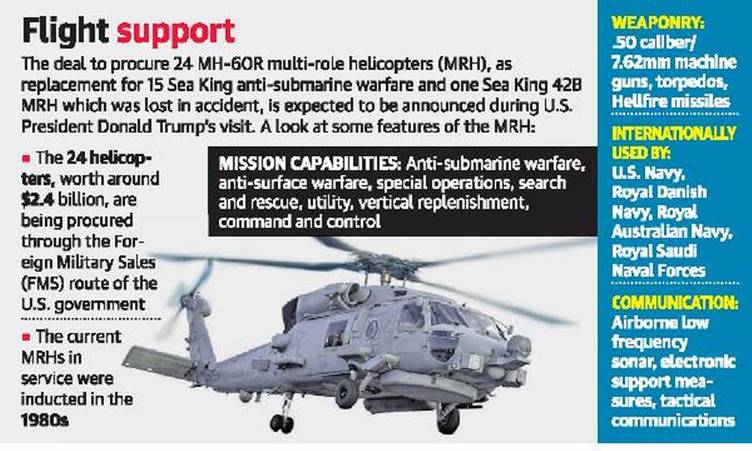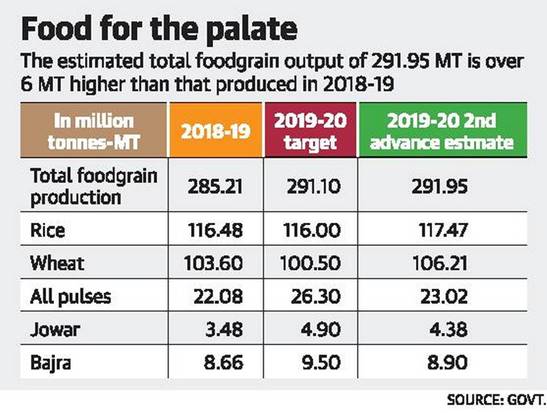



Explained: Eyes on the Sun, how ISRO is preparing for its next giant leap in space
- observe the Sun from a close distance,
- Try to obtain information about its atmosphere and magnetic field.
- Aditya L1 as a 400 kg-class satellite that will be launched using the Polar Satellite Launch Vehicle (PSLV) in XL configuration.
- It will have seven payloads (instruments) on board to study the Sun’s corona, solar emissions, solar winds and flares, and Coronal Mass Ejections (CMEs), and will carry out round-the-clock imaging of the Sun.
- It is challenging because of the distance of the Sun from Earth (about 149 million km on average, compared to the only 3.84 lakh km to the Moon)
- Prevalence of the super hot temperatures and radiations in the solar atmosphere also make it challenging.
- Aditya L1 will perform continuous observations looking directly at the Sun. NASA’s Parker Solar Probe has already gone far closer — but it will be looking away from the Sun.
- To learn about and track Earth-directed storms, and to predict their impact, continuous solar observations are needed.
- Earth and the exoplanets beyond the Solar System, evolves — and this evolution is governed by its parent star.
- The solar weather and environment, which is determined by the processes taking place inside and around the sun, affects the weather of the entire system.
- Every storm that emerges from the Sun and heads towards Earth passes through L1, and a satellite placed in the halo orbit around L1 of the Sun-Earth system has the major advantage of continuously viewing the Sun without any occultation/eclipses.
- L1 refers to Lagrangian/Lagrange Point 1, one of five points in the orbital plane of the Earth-Sun system.
- They are positions in space where the gravitational forces of a two-body system (like the Sun and the Earth) produce enhanced regions of attraction and repulsion.
- These can be used by spacecraft to reduce fuel consumption needed to remain in position.
- The L1 point is home to the Solar and Heliospheric Observatory Satellite (SOHO), an international collaboration project of NASA and the European Space Agency (ESA).
- Pakistan be retained on the ‘Grey List’, given its failure to completely implement the 27-point action plan to check terror financing.
- Most of the group members were in favour of continuing the pressure on Pakistan to execute all the measures suggested against funding to banned terror outfits and United Nations designated global terrorists operating from its soil.
- Turkey and Malaysia said Islamabad could be taken off the ‘Grey List’ in coming June.
- Pakistan said that all the objectives would be achieved as early as June 2020.
- Pakistan claimed that since the last FATF plenary, the country had taken all possible measures against terror financing.
- Pakistan had acted against transnational terror funding operations on priority and that it had convicted an unprecedented number of persons, which includes Lashkar-e-Taiba (LeT) chief Hafiz Saeed.
- All the shortcomings identified in the mutual evaluation report would also be addressed soon.
- Pakistan said that accounts of banned outfits frozen and the institutions run by them were taken over by the government.
- India said that the recent action taken by Islamabad against Saeed and others was an attempt to evade further FATF sanctions.
- Terror funding operations were still on.
- Outfits such as the LeT and the Jaish-e-Mohammed, whose chief Masood Azhar's location as per Pakistan is “unknown”, were having a free run in Pakistan.
- If Pakistan continues on the Grey List or is put in Dark Grey List, it will be very difficult for the country to get financial aid from the IMF, the World Bank and the European Union, making its financial condition more precarious.
- Such action could include calling upon global financial institutions to give special attention to business relations and transactions with Pakistan.
- The Financial Action Task Force (FATF) is an inter-governmental body established in 1989 by the Ministers of its Member jurisdictions.
- The objectives of the FATF are to set standards and promote effective implementation of legal, regulatory and operational measures for combating money laundering, terrorist financing and other related threats to the integrity of the international financial system.
- The FATF has developed a series of Recommendations that are recognised as the international standard for combating of money laundering and the financing of terrorism and proliferation of weapons of mass destruction.
- FATF maintains the current list of nations: FATF blacklist (formally called the “Call for action”) and the “FATF grey list” (formally called the ‘”Other monitored jurisdictions”).
- FATF Blacklist carried with it no formal sanction, in reality, a jurisdiction placed on the FATF Blacklist often found itself under intense financial pressure.

The 36 countries include mostly developed Western nations, but also China, Hong Kong (China), Malaysia and Turkey.
- Moving out of grey list requires at least 15 out of 36 votes.
- Resisting to black list requires three votes minimum.
India is a voting member of the FATF and APG, and co-chair of the Joint Group where it is represented by the Director General of India’s Financial Intelligence Unit (FIU).
- Afghanistan incumbent President Ashraf Ghani won a second term.
- Mr. Abdullah contested the results and vowed he would form his own parallel government.
- “Our team, based on clean and biometric votes, is the victor and we declare our victory.
- The fraudsters are the shame of history and we announce our inclusive government.
- Incomplete voters’ lists,
- unworkable biometric identification systems aimed at curbing fraud,
- In some cases hostile election workers.
- Results came days after U.S. Defence Secretary Mark Esper announced a truce agreement between the United States and the Taliban that could lead to the withdrawal of American troops from the country.
- Ghani has been critical of the way U.S. envoy Zalmay Khalilzad has conducted the talks with the Taliban, complaining about being kept in the dark.
- The deal for 24 MH-60R Multi-Role Helicopters (MRH) for the Navy.
- The 24 Lockheed Martin-built helicopters, worth $2.4 billion, are being procured through the Foreign Military Sales route of the U.S. government.
- six Boeing P-8I long-range surveillance aircraft and 13 BAE Systems-built 127-mm MK-45 naval gun systems worth around $1 billion for the Navy
- six AH-64E Apache attack helicopters for the Army
- 30 armed drones for the three services and a tactical air defence system for Delhi.

- the Logistics Exchange Memorandum of Agreement (LEMOA)
- the Communications Compatibility and Security Agreement (COMCASA)
- The Industrial Security Annex (ISA), which is part of the General Security of Military Information Agreement (GSOMIA).
- It has demanded that the Bodos in the hill areas not be given the Scheduled Tribe status as it will affect the “identity of the Karbis”.
- Villages dominated by Bodos that were presently outside the BTAD would be included and those with non-Bodo population would be excluded.
- Bodos living in the hills would be granted Scheduled Hill Tribe status.
- As of now, the agreement had not addressed the issue of “citizenship or work permit” for non-domiciles in the BTAD, to be renamed as the Bodoland Territorial Region.
- Around 1,500 cadres of National Democratic Front of Bodoland will be rehabilitated by Centre and Assam Government.
- They will be assimilated in the mainstream and will surrender on January 30.
- The Karbis is the principal indigenous community in the Karbi Anglong district and West Karbi Anglong district of the Indian State of Assam.
- The district is administered as per the provisions of the Sixth Schedule of the Constitution of India, having an autonomous district of their own since 17 November 1951.
- The Karbis linguistically belong to the Tibeto-Burman group.
- The Karbis mentioned as the Mikirs in the Constitution Order, Govt. of India.
Reference: https://www.thehindu.com/todays-paper/karbis-against-st-status-for-hill-bodos/article30855945.ece
- Total food grain production is projected to scale an all-time high of almost 292 million tonnes in 2019-20.
- Production of several crops, including rice and major pulses, was lower than targeted in the kharif or the monsoon season.
- Despite the government’s drive to encourage millets and nutri-cereals, production failed to match targets this year.
- Pulses production was also estimated to come in lower-than targeted 23 million tonnes, although it was still higher than the previous year’s harvest.

- The Union Territory administration is wooing investors by opening up a 6,000-acre land bank for setting up multiplexes, processing units, food parks, film production centres, schools, Information Technology parks and medical complexes.
- The administration has started a major exercise to convince investors across the country to buy land and invest in the Union Territory.
- The J&K administration has centred its campaign to woo investment around six key sectors, including:
- healthcare,
- tourism,
- IT,
- food processing,
- Education and skill development and industries.
- Wrestler is a Deaflympic Champion Wrestler of international repute with 100% speaking and hearing disability.
- Wrestler had also represented India at the international-level in Deaflympics and is popularly known as “Goonga Pahalwan”.
- The current policy of rewarding the persons winning medals in Olympics or Para Olympics games is discriminatory with the persons winning medals in blind or deaf championships.
- Para Olympics are being treated at par with Olympics and are getting the same cash rewards awarded by the government of India to the winner of open category.
- Sought for a direction to include him and other sportspersons who are medalist in International Deaf Olympics sports or other sports in the category of deaf /dumb in the Scheme of Sports Fund for Pension to Meritorious Sportspersons.
- In 1986, the government introduced scheme of special awards to the medal winners in international events and their coaches.
- The award is given to sports disciplines in Olympics or Asian Games or Commonwealth Games and chess.
- The Arjuna Awards are given by the Ministry of Youth Affairs and Sports, Government of India to recognize outstanding achievement in sports.
- Started in 1961, the award carries a cash prize of ₹500,000, a bronze statue of Arjuna and a scroll.
Under Ayushman Bharat-Pradhan Mantri Jan Arogya Yojana (PM-JAY), 84 lakh free treatments to poor and vulnerable patients for secondary and tertiary ailments at 22,000 empanelled hospitals has been provided.
- there is one government bed for every 1,844 patients
- One doctor for every 11,082 patients.
- Ayushman scheme is likely to provide treatment to 1.5 crore patients annually.
- India would need more than 150,000 additional beds, especially in Tier-2 and -3 cities.
- Comprehensive long-term strategy will focus on expanding hospital and human resources infrastructure,
- An effective near-term approach is needed to improve efficiencies and bridge gaps within the existing supply and likely demand.
- Innovation in the Indian health system can deal with near term solutions.
- There are more than 4,000 health-care technology start-ups in India.
- They bring innovative technologies and business models that leapfrog infrastructure, human resources, cost-effectiveness and efficiency challenges in Tier-2 and -3 cities.
- Artificial Intelligence platforms that aid in rapid radiology diagnoses in low resource settings,
- tele-ICU platforms to bridge the gap in high-skilled critical care personnel,
- Centralised drone delivery of blood, medicines and vaccines to reach remote locations cost-effectively and reliably.
- Start-ups can be effective collaborators for the most pressing health-care delivery challenges faced by hospitals, as opposed to being mere suppliers of technology or services.
- Non-uniform regulatory and validation standards: Hospitals often rely on foreign regulatory certifications such as FDA and CE, especially for riskier devices and instruments.
- Lack of standards in this area leads to a huge variation in validation requirements at States and hospitals, forcing the start-up into a spiral of piloting studies.
- Operational liquidity crunch due to a long gestation period: The process of testing the idea and working prototype, receiving certifications, performing clinical and commercial validations, and raising funds, in a low-trust and unstructured environment makes the gestational period unusually long thereby limiting the operational liquidity of the start-up.
- Health-care providers and clinicians, given limited bandwidth, often lack the incentives, operational capacity, and frameworks necessary to consider and adopt innovations.
- Start-ups lack the financial capacity to deal with lengthy tenders and the roundabout process of price discovery.
- The government is now pushing ahead to overhaul Indian med-tech regulatory standards and product standards for effective regulations.
- There is a need to facilitate standardised operational validation studies that are required for market adoption, to help ease out the start-up procurement process such that these solutions can be adopted with confidence.
- Under PM-JAY hospitals can actively engage with health-care start-ups by providing access to testbeds, communicating their needs effectively and adopting promising innovations.

© 2025 iasgyan. All right reserved